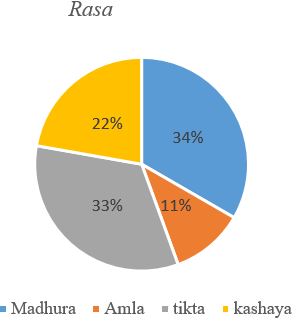Evaluation of the efficacy and safety of Traditional Ayurvedic Herbal Body Deodorants: A Review
DOI:
https://doi.org/10.21760/jaims.9.6.39Keywords:
Deodorant, Body odor, cosmetic, toxin, Kamarathnaya, SkinAbstract
Cosmetics are substances that can be applied to the human body for cleaning, beautification, enhancing beauty, and altering the appearance without changing the body's composition or functions. The cosmetics sector is widely dispersed and highly lucrative, and standard maintenance is considerably more vital; people utilize these items. The unspoken reality is that it is rarely completed. Due to that reason, the demand for herbal cosmetics has grown in the personal care industry, but their quality and standards are questioned due to potential health risks from toxins and heavy metals. Modern deodorants often contain chemicals such as aluminum compounds and parabens, which have been linked to health concerns like skin irritation and potential long-term effects. Traditional medicine and Ayurveda both mention various herbal remedies with major cosmetic applications. The ancient Ayurvedic text Kama Rathnaya, written by Nagabhattacharya, contains various herbal formulas for cosmetic purposes. This review was done on an herbal powder that is used to get rid of unpleasant body odor. Ingredients are Dadima, Yashtimadhu, Lodhra, Padma, and Pichumarda. Madhura Rasa, Snighdha Guna, Sheeta Veerya, and Madhura Vipaka are present in the majority of these herbs. And also contains Krimighna, Kushtaghna, and Daha Hara properties. There has also been evidence of anti-viral, anti-bacterial, anti-fungal, and anti-inflammatory activities. Additional in vitro and in vivo research must be done to confirm this medication's cosmetic effects.
Downloads
References
Kumar S. Herbal cosmetics: used for skin and hair cosmeceuticals. 2012 Oct; 306-314.
Prakash O. Cosmetics in ancient Rome: a historical and archaeological inquiry. J Cosmet Dermatol. 2005;4 (3):181-7.
Encyclopaedia Britannica, Edition 14th ed, 1929.
Saha R: Cosmeceuticals and herbal drugs: practical uses. International Journal of Pharmaceutical Research and Sciences, 2012; 3: 59-65.
Darbre et al., 2004; Boberg et al., 2016; Golden et al., 2015
Darbre, P. D. (2009). Aluminium, antiperspirants and breast cancer. Journal of Inorganic Biochemistry, 103(11), 1565-1571.
Błędzka, D., Gromadzińska, J., & Wąsowicz, W. (2014). Parabens. From environmental studies to human health. Environment International, 67, 27-42
Kumar, A., Dobhal, M. P., Singh, V., & Singh, M. R. (20XX). Plant Extracts: An Emerging Therapeutic Approach to the Treatment of Skin Disorders. Current Pharmaceutical Design, 24(38), 4489–4500.
Draelos, Z. D. (20YY). Cosmetic Contact Dermatitis. Boca Raton, FL: CRC Press.
Dasanayaka B A, Kamarathnaya of Sri Nagabhattacharya, Modern Book publishers, Nugegoda, Sri Lanka, 20
Department AYUSH (2008). Ayurvedic Pharmacopoeia of India (Part I, Vol. II). New Delhi: Government of India, 32
Department AYUSH (2008). Ayurvedic Pharmacopoeia of India (Part I, Vol. II). New Delhi: Government of India, 215
Department AYUSH (2008). Ayurvedic Pharmacopoeia of India (Part I, Vol. II). New Delhi: Government of India, 142
Department AYUSH (2008). Ayurvedic Pharmacopoeia of India (Part I, Vol. II). New Delhi: Government of India, 74
Department AYUSH (2008). Ayurvedic Pharmacopoeia of India (Part I, Vol. II). New Delhi: Government of India, 131
Department AYUSH (2008). Ayurvedic Pharmacopoeia of India (Part I, Vol. II). New Delhi: Government of India, 33
Department AYUSH (2008). Ayurvedic Pharmacopoeia of India (Part I, Vol. II). New Delhi: Government of India, 216 - 217
Department AYUSH (2008). Ayurvedic Pharmacopoeia of India (Part I, Vol. II). New Delhi: Government of India, 143
Department AYUSH (2008). Ayurvedic Pharmacopoeia of India (Part I, Vol. II). New Delhi: Government of India, 75
Department AYUSH (2008). Ayurvedic Pharmacopoeia of India (Part I, Vol. II). New Delhi: Government of India, 132














